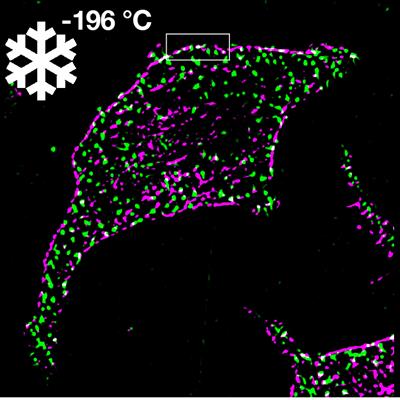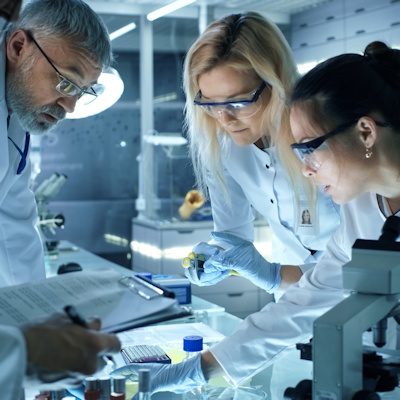March 9, 2023 -- A few simple components can convert a smartphone or tablet into a fluorescent microscope for under $50 per unit.
The proof-of-principle study, published Thursday in Scientific Reports, suggests that the device -- dubbed a "glowscope" -- could be used to inexpensively image cells, tissues, and organisms, a boon to underserved schools, science education groups, and research labs.
Much knowledge of cell biology stems from traditional fluorescence microscopy. Fluorescence microscopes are used to study specimens labeled with fluorescent stains or expressing fluorescent proteins, such as those tagged with green fluorescent protein. Their colorful, glowing images engage users ranging from students to seasoned researchers. However, fluorescence microscopes cost at least several thousand U.S. dollars apiece. Therefore, their use is typically limited to well-funded institutions, and financially impractical at many schools, universities, and science outreach settings. The researchers sought to address this disparity by developing components that, when used in combination with a smartphone or tablet, could enable fluorescence microscopy at a cost of under $50 per unit.
They developed the glowscope, made of a plexiglass and plywood frame, a clip-on camera lens, an LED flashlight, and theater stage lighting filters. The frame is used to position a smartphone or tablet above a specimen, and the lens is clipped onto the phone or tablet camera to enable magnification. The specimen is illuminated via LED flashlight, and a lighting filter is placed over the lens to filter out unwanted light wavelengths, allowing visualization of the fluorescent light emitted by the specimen.
The researchers demonstrated the glowscope's abilities by imaging live zebrafish embryos -- about two millimeters long -- expressing fluorescent proteins in the spinal cord, cardiac tissue, or hindbrain. The clip-on lens provided five-fold magnification and imaging of green and red fluorescent tissues with up to 10-micrometer resolution, sufficient to view individual pigment cells. The glowscope was used to measure embryo heart rates and, after enhancing the clarity of recorded videos using free software, the movements of individual heart chambers.
Glowscopes could potentially be used to study anatomy, behavior, physiology, development, and genetic inheritance in various small organisms expressing fluorescent proteins. Several glowscopes and smartphones could be used simultaneously to acquire video data in classrooms lacking access to multiple fluorescence microscopes.
The researchers note that science education recommendations have shifted away from traditional lecture and information memorization methods. Instead, studies indicate that more active and inquiry-based learning, in which students build their own understanding of concepts rather than absorbing information delivered in lecture format, better engages students and improves learning outcomes.
In addition, maintaining a scientifically literate citizenry that is well-versed in the STEM fields (science, technology, engineering, and mathematics) is a key component of the U.S. public education agenda. The researchers eventually hope to see science classrooms equipped with fleets of glowscopes that can engage students in hands-on learning activities, allowing students to learn about science by doing science.
Copyright © 2023 scienceboard.net













